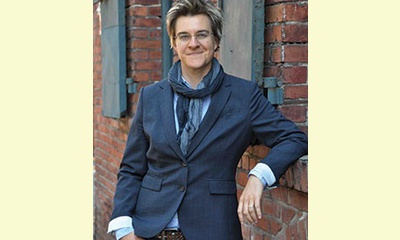|
|
Melt the guns: The Strategic Logic of Nonviolent Conflict
un article par John Malkin, Good Times, Santa Cruz (Reprinted by permission)
Study reveals the growing success of nonviolent techniques for
political change
When it comes to making positive social change, nonviolence works
better than violence—particularly when the objective is to overthrow
a regime or liberate a territory. That’s a finding revealed by Dr. Erica
Chenoweth and Maria J. Stephan in their book Why Civil Resistance
Works: The Strategic Logic of Nonviolent Conflict. It comes from a
scientific study that looked at 323 violent and nonviolent campaigns
from 1900 to 2006, with at least 1,000 people participating. 
Erica Chenoweth
click on photo to enlarge
“It turns out that the nonviolent campaigns were twice as likely to
succeed, and that the effectiveness gap was growing over time so
that nonviolent campaigns are actually becoming more effective,
and violent insurgencies are becoming less effective,” explains
Chenoweth, who will be the featured speaker at this year’s annual
dinner for the Resource Center for Nonviolence on Friday, Oct. 24 at
Peace United Church on High Street. The evening begins at 5 p.m.
with a silent auction and includes a gourmet vegetarian dinner at 6
p.m. A presentation by Dr. Chenoweth titled “Nonviolence is
Participatory” begins at 7 p.m. Reservations for the dinner/program
($40-$100 sliding) and program only ($8-$25) can be made at
423-1626 or 2peterkc@gmail.com.
Stephen Zunes, Santa Cruz resident and author of numerous books
and articles on nonviolence, told GT, “Erica Chenoweth was
skeptical of those of us who argued that nonviolent resistance was
more effective than armed struggle. So she set out to test it. What
she learned surprised her. As a result, she has given nonviolent
action unprecedented attention and credibility in the academic
community and beyond.” GT spoke with Dr. Chenoweth about her
findings.
The opening quote in your book is from Malcolm X:
“Nonviolence is fine as long as it works.” What are the main factors
that contribute to a nonviolent campaign being successful?
Erica Chenoweth: The most important aspect is the size of
participation. A very large group of people can cause real economic
disruption by shutting down urban areas. Diversity of participants
provides crucial avenues to influence the opponent’s pillars of
support. “Pillars of support” refers to institutions, or people within
them, that power holders rely upon to maintain order. These are
security forces, civilian bureaucrats, media, business and economic
elites and religious or cultural authorities.
Loyalty shifts are also important. A great example is found in the
Serbian revolution that overthrew Milosevic in 2000. There was a
crucial turning point where hundreds of thousands of people were
descending on Belgrade to protest voter fraud, and there was an
order given to the police to shoot live ammunition into the crowd.
They disobeyed the order. When police were asked why they didn’t
shoot one of them answered, “I thought my kids would be in the
crowd” . . .
(This article is continued in the discussionboard)
|








|
DISCUSSION
Il n'y pas encore de question liée à cet article.
* * * * *
Commentaire le plus récent:
(The following is continued from the main article listed above.)
You write that, “Violent insurgencies did succeed about 25 percent of the time, but that is a much lower rate than the nonviolent conflicts.” What was the success rate for nonviolent movements?
About 52 percent. That’s conditioned on the campaign already having developed a base of participation of at least 1,000.
A common belief is that nonviolence is chosen by wealthy people in democracies, whereas those living in poverty in repressive societies choose armed resistance, often as a last resort.
Poverty is definitely correlated with the onset of violent campaigns. But we found that there is not a significant relationship between the wealth of a country, or inequality within a country, and the onset of a nonviolent campaign. Nonviolence seems to be a near-universal technique of making political change. There is no systematic pattern that would support the claim that nonviolence is only chosen by privileged people around the world.
Less than 2 percent of the violent insurgencies during that time period (1900–2006) used civil resistance in a coordinated way for longer than a year before they turned to violence. That’s important because the average civil resistance campaign takes about three years to generate the power shift that’s required. Most violent movements jump the gun; they don’t do civil resistance long enough to see the political effects.
Your study shows that nonviolence is more successful in authoritarian regimes than democratic societies. Why?
This is because protest is the number one tactic that movements use, but protest is so normal in democracies that it barely gets noticed. . ... continuation.

|
|









